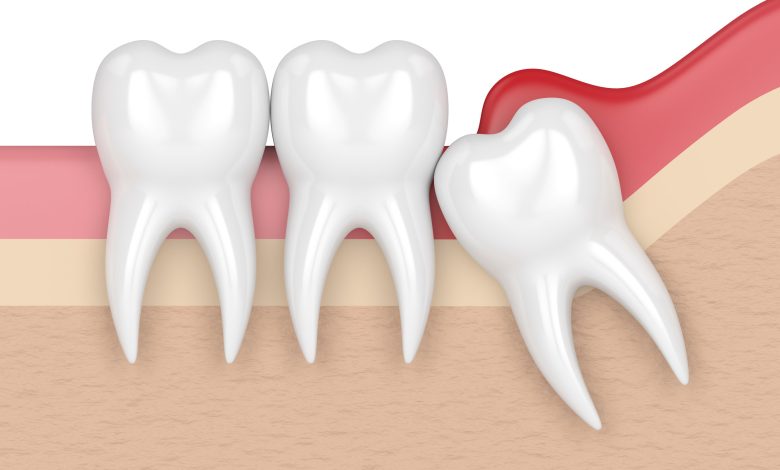The Role Of Nutrition In Promoting Children’s Dental Health

What children eat and drink has a direct effect on their teeth. A good diet is one that provides an adequate intake of vitamins and minerals, which support growth, development, resistance and repair.
Nutrition and oral health are interrelated in many ways. Chewing is the first step in the digestive process and starts the chemical breakdown of foods.
Nutritional Needs
The human body needs energy from food for various physiologic processes. These processes can be triggered by stress, illness or even physical activity. Getting enough energy allows the body to function normally and can prevent malnutrition.
To meet their nutrient needs, children must have an adequate intake of carbohydrates, proteins and fats from different food groups. They also need vitamins, minerals and water. Carbohydrates are a good source of energy for the body, but should be consumed in moderation because too much can cause weight gain and can interfere with absorption of other nutrients such as fats and fiber.
A healthy child must have a sufficient amount of protein, which is essential for cell growth and development. It is found in meats, fish and eggs as well as dairy products and legumes such as beans and peas. Protein also contains iron, which helps to form red blood cells and carry oxygen throughout the body. A protein-rich diet is particularly important for children, athletes, male teenagers and those with select medical illnesses.
It is recommended that children consume a variety of fruits and vegetables each day as they provide important vitamins, minerals and fiber. Choosing fruit and vegetable choices that are low in sugar and saturated fat will help to reduce the risk of tooth decay, as well as a number of other health problems. Limiting salt, or sodium, in the diet is also important as it can lead to high blood pressure. Limiting the amount of salt in bread, sauces and salty processed foods like luncheon meats and chips will help to decrease a child’s sodium intake. In addition, a child should have a glass of milk or an alternative to drink each day.
Malnutrition
Throughout the world, malnutrition is a serious problem that is often overlooked. Whether it is caused by not having enough to eat, not having access to nutritious foods or imbalances in the types of food that are eaten, malnutrition can lead to low body weight, poor growth and development, weaker immune systems, more illness and poorer overall health. People working in the field of public health nutrition study how to prevent and treat malnutrition at an individual, community, city, state or country level. They do this by conducting research, developing programs and advocating for political reform.
People who are at risk of malnutrition are often those living in poverty, especially children, whose bodies need more to grow and develop. They can also be elderly people living in care facilities, those who suffer from long term chronic illnesses that reduce appetite and affect calorie absorption or those with eating disorders such as anorexia and bulimia.
Malnutrition is also caused by lack of access to food or because a person is not eating well due to poor diet, lifestyle or oral health problems. Deficiencies in protein or energy foods are associated with severe dental caries, enamel hypoplasia and salivary gland dysfunction. In addition, poor nutritional health can increase a person’s risk of developing a variety of diseases, including cancer, heart disease and diabetes. This is because good oral and nutritional health are interrelated and help to maintain homeostasis, the biological processes that keep the body healthy.
10 Ways To Help Children Enjoy Good Dental Health
Vitamins
Children and their families need vitamins from the foods they eat. Until the 1930s, people obtained most of their vitamins from foods. In that decade, the U.S. government began fortifying food with nutrients such as iodine to prevent goiter and folic acid to reduce birth defects in pregnancy. Multivitamins and single-nutrient supplements also became available to help people meet their vitamin needs.
Many of these vitamins have direct or indirect links to oral health, such as vitamin A that promotes growth and development of the mouth and body and helps fight infection. Vitamin C is a powerful antioxidant that supports the gums and connective tissues of the mouth, and calcium is important for healthy teeth and bones.
A diet high in sugar-rich foods and beverages is a major contributor to dental caries (cavities). The frequency of these sugar intakes, rather than the amount consumed, is most important in determining cavity risk. The timing of food and beverage consumption is also critical, and children in the high-risk group need to be encouraged to eat snacks and meals with reduced sugar at regular intervals.
In addition, the mineral fluoride can reduce dental caries. Children need to brush their teeth with toothpaste or mouthwash containing fluoride after every meal and snack.
Proteins are needed to build muscle and aid in resistance to infections of the mouth and digestive tract, such as herpes simplex and cytomegalovirus. Some children with HIV infection experience oral lesions and nutritional consequences of oropharyngeal candidiasis, resulting in painful, burning mouth, trouble swallowing and reduced appetite and weight loss. This is a significant health problem for these children, and can have serious societal implications.
Promoting Sustainability in the Artificial Tree Industry: The Role of Plastic Plant Manufacturers
Minerals
Minerals are substances that have a fairly well-defined chemical composition and crystalline structure. They can only form by natural means and are inorganic (not carbon compounds like those found in living things). Minerals must also be solid and not a liquid or gas. They can have a range of physical properties including hardness, luster, streak and cleavage.
Usually minerals are classified by their chemical composition, but they can be recognised and named according to a range of other characteristics. One of the most important is how hard or soft they are – for example, graphite and diamond are both made of carbon but they have very different textures. Another important characteristic is the way a mineral reacts to pressure – for example, some minerals are very brittle and break easily, others are softer and can bend or even spring back into shape. Some minerals are very clear and can be seen through, but others are opaque and can’t be seen at all. A mineral’s streak is the color it has when rubbed on a hard surface. The cleavage is the way a mineral breaks up into flat surfaces or geometric shapes. Minerals have a particular specific gravity which is how dense they are when they are dry.
Minerals are used for many important things in our daily lives. Metals such as iron (as steel), copper, aluminum, nickel and tin are used for building houses and cars, as electrical wiring, in pop cans and as batteries. Other minerals such as gypsum, limestone, sand and clay are used in construction work to make bricks and concrete, while precious metals such as gold and silver are used for jewelry. Minerals can be made into chemicals such as fertilizers and medicines, or they can be mined from the ground and used in manufacturing products such as batteries, pots and pans, computers, mobile phones and car parts.
The Comprehensive Guide to Oral Care: Uncovering the Essentials and the Role of Dental Labs in China
Sugar
Sugar is one of the most highly-consumed substances in the American diet, causing tooth decay and negatively impacting oral health. Although nutrient-rich foods can help offset this effect, children and adults are still at risk for developing dental disease due to excess sugar consumption. Tooth decay is a significant source of pain and suffering worldwide and a major contributor to global healthcare expenditures. It also interferes with normal growth and development in young children. While dental disease can be caused by many factors, such as genetics or poor oral hygiene, the most common cause of tooth decay is excess added sugar.
Too much added sugar can lead to a variety of health problems including obesity and heart disease. It also contributes to the development of dental caries, which is the most common non-communicable disease among children in high income countries. Dental caries is a serious oral health problem that can impact quality of life, as it causes severe pain and discomfort, resulting in the need for restorative dental procedures and consuming 5-10% of healthcare budgets in high income countries.
In addition to oral health education, kids dentist Brentwood can play an important role in preventing excess sugar intake by helping families make healthier food choices and advocating for broader policy-based interventions such as warning labels and taxes on products with added sugar. Future intervention research should incorporate sociodemographic, behavioral, and social determinants of health behaviors into dental strategies to reduce added sugars in the diet of children.
Early sugar exposure influences children’s taste for sweet foods and drinks, which increases the likelihood of acquiring dental caries in later life. Thus, strategies that aim to reduce children’s free sugar intake should be a priority for dental health professionals and public health programs.
Read more articles at Recablog




